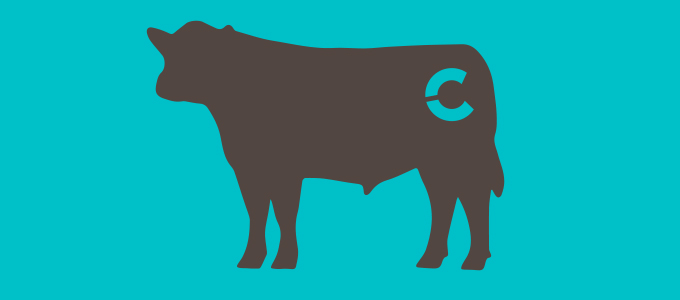Where Did The Term Branding Originate And How Has It Changed?

The concept of Branding has been around for hundreds of years and probable much longer. What information technology ways to make something has broadened quite a bit since the word first came in to use. Despite the changes, each of the older kinds of branding are notwithstanding in wide use today. This post will explore how the concept of branding has changed and grown over the years, and speculate on what'south coming adjacent.
Trouble at the O.K. Corral
The mod word Make is derived from the word "Brandr", a discussion from Aboriginal Norse pregnant "to burn down". Around 950 A.D. a "brand" referred to a burning piece of wood. By the 1300s information technology was used primarily to describe a torch, essentially a burning piece of wood that is used every bit a tool. By the 1500s the meaning had changed to refer to a mark burned on cattle to show ownership. Individual ranches would each accept their own unique marking so ownership could be determined if their animals were lost, stolen, or mixed in with animals from another ranch. Each brand had to be simple, unique, and easy to place quickly – essential traits that are still common to modern logos.
The Marker of Quality
The 1820's saw the ascent of the mass product and shipment of trade goods. As products similar ale and wine began to see larger batches and wider distribution, producers began burning their marker into crates and cases of goods to distinguish themselves from their competition. Over time, the make evolved into a symbol of quality rather than ownership. Products that were perceived as high and consistent quality could control a higher price than their undistinguished alternatives. In 1870, is became possible to register a trademark to foreclose competitors from creating confusingly like products. Brands promised functional benefits such as Coca Cola'south 1905 slogan, "Coca Cola Revives and Sustains". Brands themselves had go valuable.
The Rise of Mass Media
The introduction of radio and tv set gave manufacturers new ways to create demand for their products. In 1928, Edward Bernays, the nephew of Sigmund Freud, published a book called Propaganda. Bernays argued that past associating products with ideas large numbers of people could be persuaded to modify their behavior. The volume was enormously popular, and Madison Avenue took notice. By the 1960's, marketers were using mass media to associate brands with emotional benefits rather than functional ones. Advertisements showed how using a item brand would brand you more desirable, part of an exclusive club, or — as Coca Cola promised in 1979 with "Have a Coke and a Smile!" — just happier.
A Swiftly Shrinking Planet
By the 1980's, distribution channels reached around the globe, and consumers had more than choices than e'er. Companies began to focus on building brand recognition for themselves rather than focusing exclusively on their products and services. This allowed them to build loyalty that extended across product lines and gave their consumers a sense of belonging and personal meaning. In 1984, Apple Computer released their iconic "1984" television advertisement that showed users breaking free of rigid conformity by using Apple computers. The computer itself was almost an afterthought. The concept took off and businesses began to focus on establishing long term corporate identity rather than creating brusk advert campaigns. Advertising agencies grew into make consultancies. Corporate branding extended to non-profits, political groups, and fifty-fifty personal brands for celebrities.
What Comes Next?
The ascent of the internet and social media is driving the side by side stage of the evolution of branding. Unlike consumers of the past, internet-connected people of today aren't satisfied to merely consume – they desire to participate. Social media brands like YouTube and Facebook rely on their users to help plant their value and how they are perceived by the public. Content sites like Amazon and Yelp depend on reviewers to provide their near persuasive content. Although net-based companies requite up some of the control of their brand image, the loyalty from an actively participating customer base is unparalleled. Viral marketing, search engine optimization, and outsourced delivery allow organizations to proceeds visibility and evangelize products without spending millions on ad and infrastructure. What comes next is anyone'due south gauge. Personally I tin can't wait to find out.
Where Did The Term Branding Originate And How Has It Changed?,
Source: https://www.weareconvoy.com/2014/01/a-brief-history-of-branding/
Posted by: dennisalannow.blogspot.com


0 Response to "Where Did The Term Branding Originate And How Has It Changed?"
Post a Comment